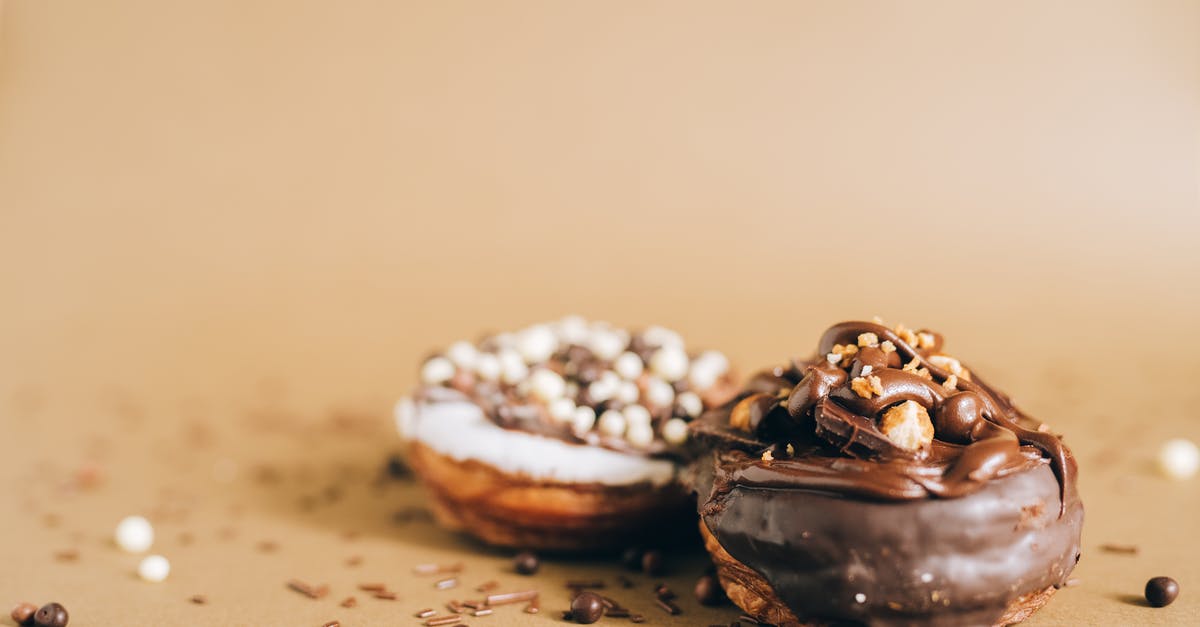What is the difference between Milk Chocolate and Dark Chocolate?

What is the difference between Milk Chocolate and Dark Chocolate?
Does Dark Chocolate not have milk? What are each made out of that make them different?
Best Answer
Short answer: yes, milk chocolate differs from chocolate by the milk its manufacture.
Real chocolate (as opposed to many other confections) is made from chocolate liquer, which despite the name, is not alchoholic, or even liquid at room temperature.
The fruit of the theobroma cacao tree contains seeds, known as beans. The harvested fruits are allowed to ferment, bringing many flavor and chemical changes to the beans, as well as removing the pulpy fruit. The beans are then husked for the seeds inside, the nibs.
The nibs are the first true chocolate product, although they are not sweet.
The nibs are roasted, and then ground. This is chocolate liquer, a solid colloid of cocoa fat and solid particles. It would be solid at room temperature, but the grinding process melts it.
The cocoa liquer can be pressed to separate out the cocoa butter (as for use in the cosmetics industry), leaving cocoa powder, but that is not the point of your question.
Instead, to manufacture chocolate, the liquer is conched, a mechanical process that makes the suspended particles much smaller, part of what gives chocolate its smooth mouthfeel.
Various products can be made from chocolate liquer, or cocoa butter, including:
- baking chocolate - essentially, just chocolate liquer, hardened and tempereded. May or may not be fully conched, so may not be as smooth as chocolate intended for eating.
- chocolate or dark chocolate - Chocolate liquer, possibly extra cocoa butter, and sugar. Minor optional ingredients often included are vanilla or other flavorings, and lecithen, an emulsifier.
- milk chocolate - Same as dark chocolate, with the addition of condensed milk or milk solids, depending on whether it is made via the Swiss method or the Hershey method
- white chocolate - cocoa butter, plus sugar and other flavorings
- chocolate chips - Another form of chocolate in a particular shape. Many manufacturers don't make these from true chocolate, but rather substitute another fat which doesn't melt as easily as cocoa butter, for economy, and so the chips hold their shape in the oven
- chocolate bunny - Chocolate molded into the shape of a bunny, then tempered and cooled
- German's chocolate - A brand name of quite sweet dark chocolate
Chocolate labels which list "cocoa percentage" are saying what proportion of the chocolate is cocoa liquer or additional cocoa butter or cocoa solids--that is, stuff from nibs, as opposed to sugar or other flavorings. The cocoa percentage for milk chocolate tends to be much lower than that of dark chocolates, although not every milk chocolate has a lower percentage than every dark chocolate.
See this question for information on tempering chocolate, which gives its snappy mouthfeel.
Edit: On dairy products in dark chocolate:
I was very surprised at Lemontwist's comment, so I did some googling and found this article at Go Dairy Free:
A good quality dark or semi-sweet chocolate will only have sweetener / sugar in some form added, and may also include a touch of soy lecithin as an emulsifier. These brands are milk-free by ingredients, but keep in mind that most brands of chocolate are made on shared equipment. That is, an inherently milk-free dark chocolate may be made on the same equipment as milk chocolate. See below for my note on cross-contamination issues.
The complications arrive as some brands of dark and semi-sweet chocolate do include milk ingredients for a “smoother” end result. This is particularly true in mainstream brands like Hershey’s. Some ways that you may see milk listed in the ingredients include milk solids, milk, milk powder, whey, butter oil or butterfat (see the Ask Alisa post on butter oil), or even casein. If milk is in the ingredients, it should be listed in a clearly identifiable manner per the labeling laws, but still, use caution.
This is still in line with the information I provided, as I did mention "other flavorings" in dark chocolate, and it is not a universal or even common practice as far as I know.
For people with strong allergies, the cross-contamination issue may be more of an issue.
Vegans would have more of an issue, as lecithen is a very common ingredient in chocolate of all types, and may be animal sourced. Vegans would specifically need to reseearch and obtain chocolates that meet that standard. Googling will find many such products, but I did not find an easy single reference list.
Pictures about "What is the difference between Milk Chocolate and Dark Chocolate?"



Why is dark chocolate better for you than milk chocolate?
Dark chocolate \u201ccontains two to three times more flavanol-rich cocoa solids as compared to milk chocolate,\u201d Peart adds. \u201cIt's significantly higher.\u201d That's a huge health benefit for your heart. Flavanols are related to the production of nitric oxide, which relaxes your blood vessels and improves blood flow.Which chocolate is healthier dark chocolate or milk chocolate?
When it comes to which type of chocolate is the healthiest, the answer is simple: it's dark chocolate by a landslide. Since dark varieties contain super-high cocoa contents (usually 70 to 80 percent, but many up to 100!), they contain more flavanols than milk chocolate.Which chocolate is the healthiest?
The bottom lineChocolate with over 70% cocoa packs the best punch for your health, but enjoy it in small amounts: 100 g of dark chocolate has 500 calories! Unsweetened chocolate is 100% cocoa. It's very bitter and only eaten as part of prepared baked goods.What is the major difference between dark and milk chocolate?
The difference between milk chocolate and dark chocolate is that dark chocolate does not have any milk solids added. Dark chocolate will generally have a higher percentage of cocoa solids and can range from 30% to 80% in cocoa solid make-up.Milk Vs. Dark Chocolate: The Ultimate Showdown
Sources: Stack Exchange - This article follows the attribution requirements of Stack Exchange and is licensed under CC BY-SA 3.0.
Images: Fallon Michael, freestocks.org, Olya Kobruseva, Olya Kobruseva
